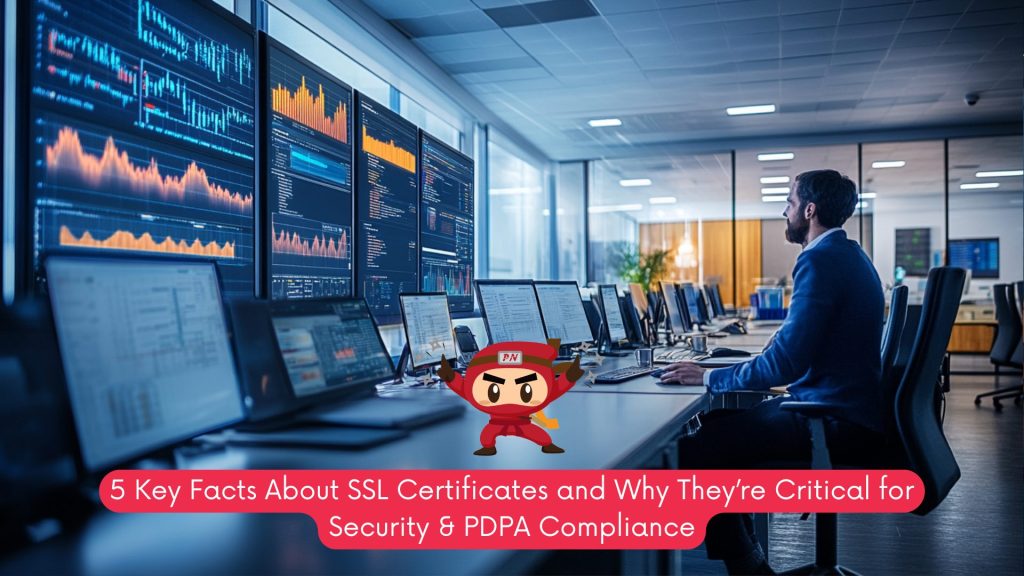KEEP IN TOUCH
Subscribe to our mailing list to get free tips on Data Protection and Cybersecurity updates weekly!







Many people believe that the small lock icon next to a website’s address bar means the site is “safe.”
The truth is — SSL doesn’t make a site safe.
What SSL (Secure Sockets Layer) actually does is encrypt data transmission between your browser and the web server, preventing third parties from intercepting sensitive information such as login credentials, NRIC numbers, or payment details.
However, SSL alone cannot prevent malware, phishing, or poor data handling practices once your data reaches the server.
In short: SSL protects data in transit, not data at rest.
The lock icon indicates that your connection is encrypted, not that the website itself is trustworthy.
Attackers can still host malicious content on SSL-enabled domains.
Tip: Always check the certificate details (via your browser’s “Connection is secure” section) to confirm who issued the certificate and whether it’s valid.
There are three main tiers of SSL certificates, and they vary in terms of validation and trust:
| Type | Verification Level | Use Case |
| DV (Domain Validation) | Verifies domain ownership only | Personal blogs, testing sites |
| OV (Organisation Validation) | Verifies business identity | Corporate or e-commerce sites |
| EV (Extended Validation) | Highest level; displays organization info in the certificate | Financial institutions, high-trust entities |
⚠️ Beware: Many scam sites use DV-only SSL certificates, often issued by free providers like Let’s Encrypt, to appear secure.
Always verify the certificate authority and company name behind the SSL.
Even if a site once had SSL, an expired certificate or improper HTTPS setup (like mixed content where some resources still load over HTTP) can break encryption and expose data to man-in-the-middle (MITM) attacks.
Best Practices:
SSL is not just about security — it’s also about visibility and credibility.
In short, SSL directly influences your SEO performance and brand reputation.
Under Singapore’s Personal Data Protection Act (PDPA), organisations are legally required to make “reasonable security arrangements” to protect personal data against unauthorised access or disclosure.
SSL/TLS encryption helps organisations meet this Protection Obligation by ensuring:
According to the PDPC’s Guide to Data Protection Practices for ICT Systems, HTTPS/TLS is considered a core ICT control for securing web applications and preventing common attack vectors like session hijacking or sniffing.
SSL is a crucial first step, but it’s not enough to keep your organisation safe.
It should be part of a broader cybersecurity framework that includes:
At Privacy Ninja, we often remind our clients that SSL is like a seatbelt — it minimizes risk but doesn’t guarantee total safety.
SSL = Encrypted transport + Trust signal.
PDPA = Legal obligation + Accountability proof.
Combine both = Cyber-resilient, compliance-ready organisation.
SSL ensures your data travels securely.
PDPA ensures you’re legally accountable for protecting that data.
Together, they form the backbone of a modern, privacy-conscious cybersecurity strategy.
If you’d like to know whether your web, mobile, or cloud applications are truly secure beyond SSL, our team at Privacy Ninja can help.
We perform security testing, PDPA readiness assessments, and compliance audits that uncover vulnerabilities SSL can’t protect against.
👉 Find out more about cybersecurity and data protection — link in comments.
Q1: Does having SSL mean my website is fully secure?
No. SSL encrypts the connection between a browser and the server, but it doesn’t protect against malware, poor coding, or compromised databases.
Q2: How does SSL help with PDPA compliance?
SSL supports PDPA’s Protection Obligation by safeguarding data during transmission and showing that the organisation has taken reasonable security measures.
Q3: Can expired SSL certificates affect my SEO?
Yes. Expired or misconfigured SSL can cause browser warnings and reduce user trust, negatively impacting both SEO and conversion rates.
Q4: How often should SSL configurations be audited?
At least once a year, or whenever you make major website or hosting changes.